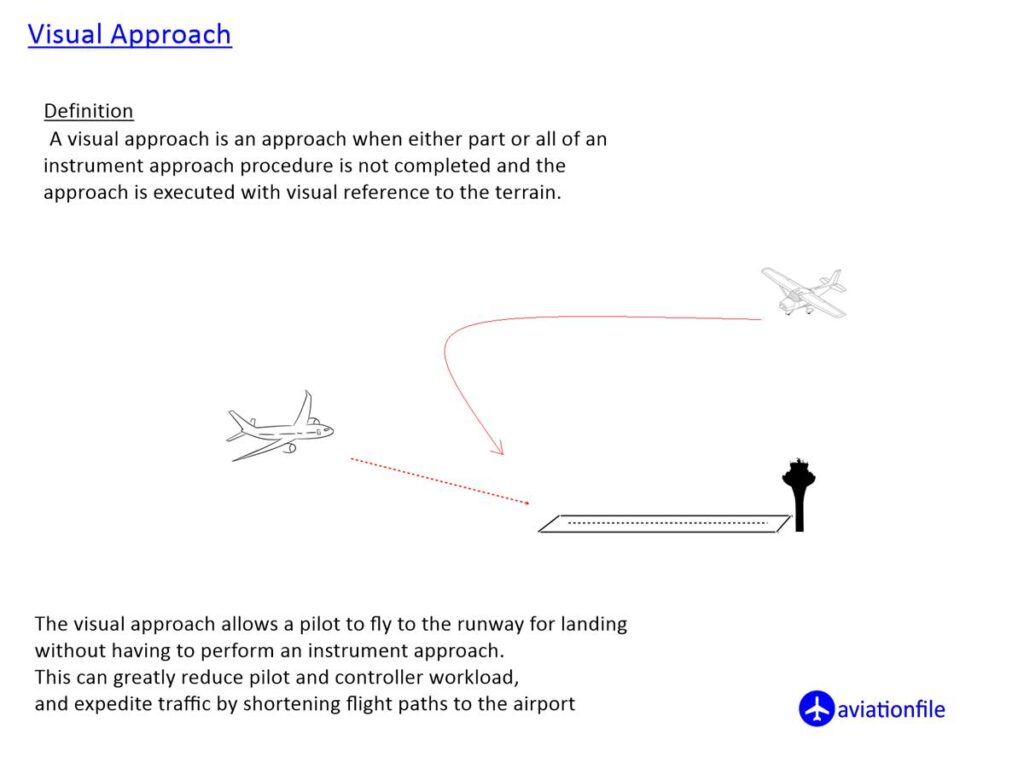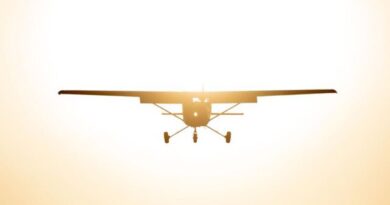Visual Approach in Aviation
Hello, in this article we will look at what the concept of Visual Approach means. Airplanes follow certain rules and procedures as they approach airports for landing. There are also many assistive devices (Navigation Aids) to facilitate the approach and landing of aircraft. One of the most popular system today is ILS – Instrument Landing System.
In some cases, aircraft can also land by applying a Visual approach without reference from assistive devices. At this point, let’s look at the definition. By the way an element of an instrument approach system (e.g. an Instrument Landing System (ILS) localiser) is often used by pilots to assist in alignment for a visual approach.
A VA is an approach when either part or all of an instrument approach procedure is not completed and the approach is executed with visual reference to the terrain. (JAR-OPS 1.435 (a) (8))
A visual approach is an ATC authorization for an aircraft on an IFR flight plan to proceed visually and clear of clouds to the airport of intended landing. It is not a standard instrument approach procedure and has no missed approach segment. (FAA definition)

There are different approaches between ICAO and FAA on the definition of vis. Approach and the conditions under which it can be applied.
Pilot shall maintain visual reference to terrain and the reported ceiling shall be at or above the approved initial approach level. (ICAO Doc. 4444)
A vis. approach is not permitted when the Runway Visual Range (RVR) is less than 800 meters. (Appendix 1 to JAR-OPS 1.430 (g)).
VA must be authorized and under the control of the appropriate Air Traffic Control (ATC) facility. The pilot must indicate that she will be within sight of either the aerodrome or the preciding aircraft until landing. (Federal Aviation Administration (FAA): 5–4–23. 2010-11-10.)
The pilot is responsible for their own terrain and obstruction avoidance during a go-around after conducting a visual approach. The facility can assign headings towards the lowest terrain and obstructions (FAA – 7110 – 65).
Why bother?
Visual approaches aren’t just for showboating. They offer several advantages:
- Reduced workload: Ditching instrument procedures frees up mental space for pilots, boosting situational awareness and reducing stress.
- Faster landings: Visual approaches often allow for more direct routes, shaving precious minutes off landing times.
- Improved fuel efficiency: Flying visually can be more fuel-efficient than instrument approaches, thanks to smoother descents and fewer course corrections.
Think you’ve got the right stuff?
Visual approaches offer a taste of aviation freedom, where piloting skill meets stunning vistas. But remember, safety always comes first. Fly within your limits, respect the weather, and prioritize clear communication with air traffic control. So, next time you see a plane slicing through clear skies, you might just be witnessing the magic of a visual approach in action!
References and Further Reading
- Federal Aviation Administration (FAA): https://www.faa.gov/regulations_policies/faa_regulations
- SKYbrary Aviation Safety: https://www.cfinotebook.net/notebook/aircraft-operations/approaches/visual-approaches
- Boldmethod: https://www.boldmethod.com/learn-to-fly/navigation/how-to-transition-and-land-from-a-visual-approach-to-touchdown/


